Lots of interesting abstracts and cases were submitted for TCTAP 2024. Below are the accepted ones after a thorough review by our official reviewers. Don’t miss the opportunity to expand your knowledge and interact with authors as well as virtual participants by sharing your opinion in the comment section!
TCTAP C-168
A Case of Delayed PCI Due to Inter-Analyte FFR-Angiography Discrepancy After Invasive FFR
By Takashi Sasou
Presenter
Takashi Sasou
Authors
Takashi Sasou1
Affiliation
Mie University Hospital, Japan1,
View Study Report
TCTAP C-168
Coronary - Imaging & Physiology - FFR
A Case of Delayed PCI Due to Inter-Analyte FFR-Angiography Discrepancy After Invasive FFR
Takashi Sasou1
Mie University Hospital, Japan1,
Clinical Information
Patient initials or Identifier Number
Relevant Clinical History and Physical Exam
【Current medical history】At the age of 68, he had bradycardia without symptoms, so a Holter ECG was performed. 8 months later, CAG recheck revealed ISR(+) in LAD. ISR(+) in LAD, PCI to LAD#7 (DCB 3.0×15). 6 months later, he was admitted for another CAG recheck.【Medical history】Diabetes mellitus, chronic kidney disease.【Physical examination】Height: 165.8 cm, Weight: 63.8 kg, BMI: 23.2, BT: 36.5°C, HR: 57(/min), BP: 110/57(mmHg), RR: 20(/min), SpO2: 98(%)
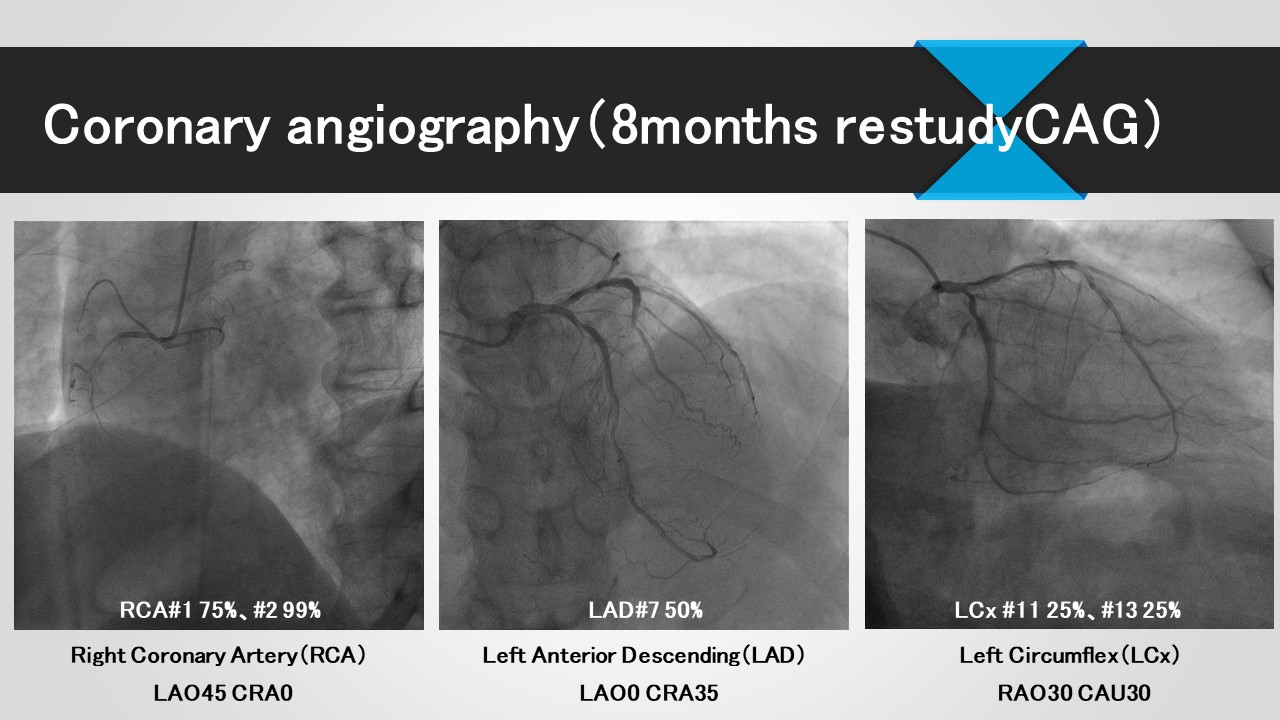
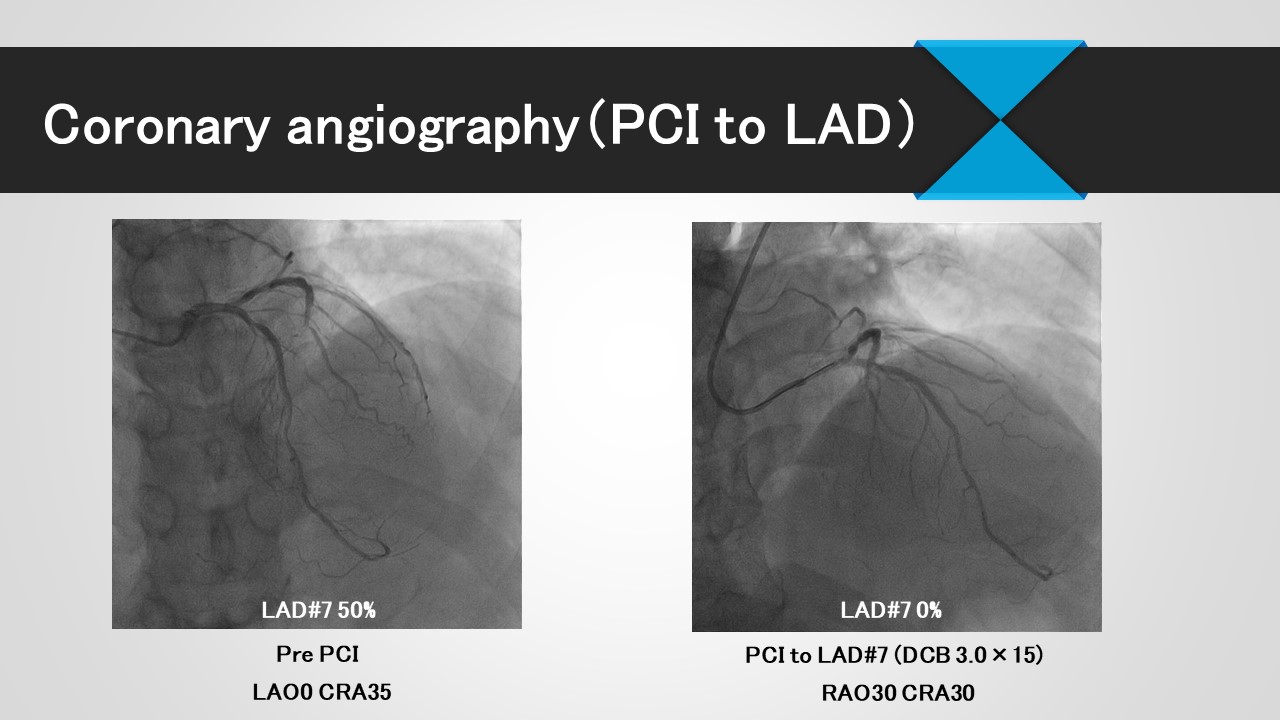


Relevant Test Results Prior to Catheterization
12-lead EKG showed HR: 71/min, sinus rhythm, no axial deviation, and ventricular extrasystoles.Chest X-ray showed CTR: 51%, CP angle: acute right and left, no enhancement of pulmonary vascular shadows.Chest echo showed EF: 64%, sinus rhythm (multiple VPCs), and partial wall motion abnormality. Hypokinesis (inward motion during systole, but reduced compared to wall motion in healthy subjects) was observed at the cardiac base/inferior wall septum.
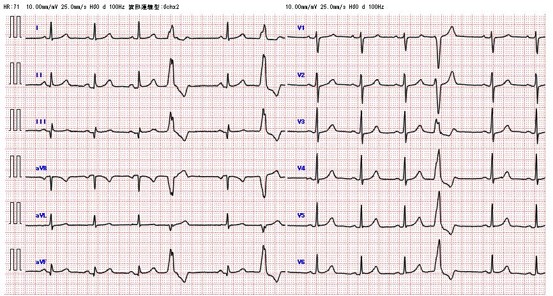

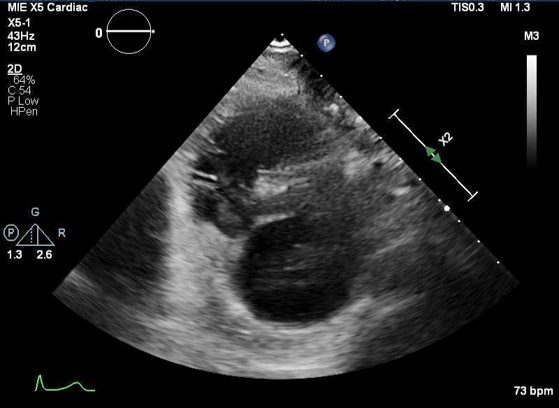



Relevant Catheterization Findings
CAG showed RCA#1 75% #2 99% (non-dominant) LAD#7 50% LCX#11 50% #13 75% findings and
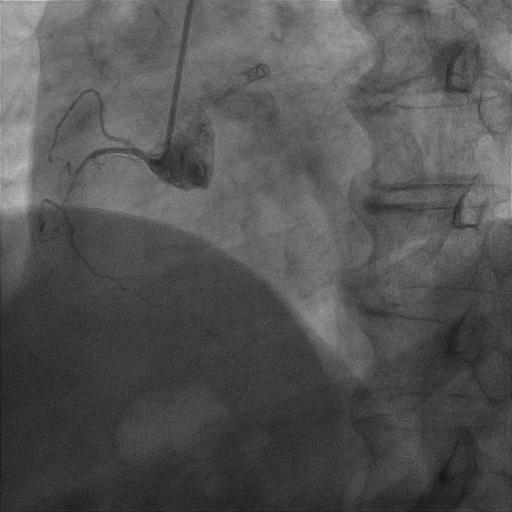

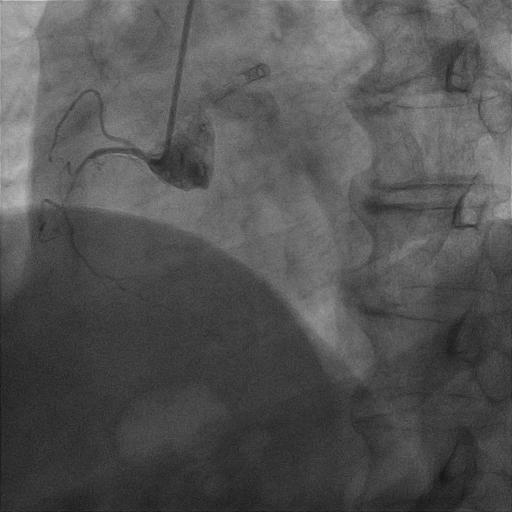



Interventional Management
Procedural Step
After CAG, LAD#7 was 50%, LCX#11 was 50%, #13 was 75%, and RCA#1 was 75%. Therefore, FFR Angio was performed on LAD and LCX, which was negative for LAD at 0.84 (Analyst 1) and 0.84 (Analyst 2) and discordant for LCX at 0.73 (Analyst 1) and 0.82 (Analyst 2). Invasive FFR was performed on LCX, and both RFR: 0.92 and FFR: 0.95 were negative; due to the discordance between the analysts in FFR-vascular therapy, invasive FFR was performed and PCI was postponed. The patient was doing well, and the patient was placed on medical therapy.






Case Summary
It has been reported that FFR-angiograpy (FFR Angio) is correlated with invasive FFR value, and that sensitivity, specificity, positive predictive value, and AUC are better when the cutoff value of FFR is 0.8. In this report, Invasive FFR was performed and PCI was postponed due to inter-analyst discrepancy in FFR-angiograpy.

